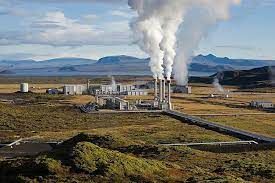COURTESY : www.thinkgeoenergy.com
Geothermal and wind energy
Scientific American published an interview with Leon Steinberg, the CEO of National wind. In this interview he is giving an insight into his industry and what hurdles the wind industry is facing.
While this might not be generally interesting, I found some of the remarks quite interesting for the geothermal world.
For example, when being asked about the current economic crisis and financing, he talks about how important the production tax credit is, while at the same time there is reduced demand for them. So, and this should also apply to the geothermal sector, he sees a refundable tax credit or grant program as helpful to tackle that. Well, with the cash grant as part of the passed stimulus legislation this is seeing an implementation.
He is then being asked, which he believes – from a strategic standpoint, which the bigger competitor for wind is, “incumbent coal, oil and gas technologies or other alternative energy technologies? His answer: “Solar and geothermal will be the most competitive once the technology evolves to the point where they are more economical.”
This is interesting and main message, the wind energy is not only aware of the geothermal sector, but looks at it closely.
The last question of the interview goes then into cost targets for the wind industry. He answers that “the capital cost of wind development start to decrease in the next five years. A single megawatt of wind energy today costs $2 million to $2.5 million to develop. The increased cost of steel and other components for wind turbines has led to this elevated price tag. We believe that as turbine manufacturing increases in the U.S., and as more sufficient transmission is available, along with advancements in turbine technology, the capital cost of wind development will be on a downward scale.”
I believe this answer is from two perspectives interesting for the geothermal sector, at first comparing a development cost of US$ 2 million/ 1 MW of wind power to the current average of US$ 4 million/ 1 MW for geothermal, and secondly regarding the cost of components. Simply message, geothermal is indeed competitive.
One simply has to look at the capacity factor. Wind has a capacity factor of around 25% onshore and up to 40% offshore, while geothermal has capacity factors of at least 80 to 90%. So one can do a simple calculation of what comes out in the end through electricity sales, with the result that geothermal can compete. This has also been the main take away from Credit Suisse’s analysis of alternative energy technologies of January 2009.
On the cost for components, regarding turbines and steel costs, this applies to geothermal as well.
So all in all, an interesting interview with some good points that show that geothermal is competitive.



